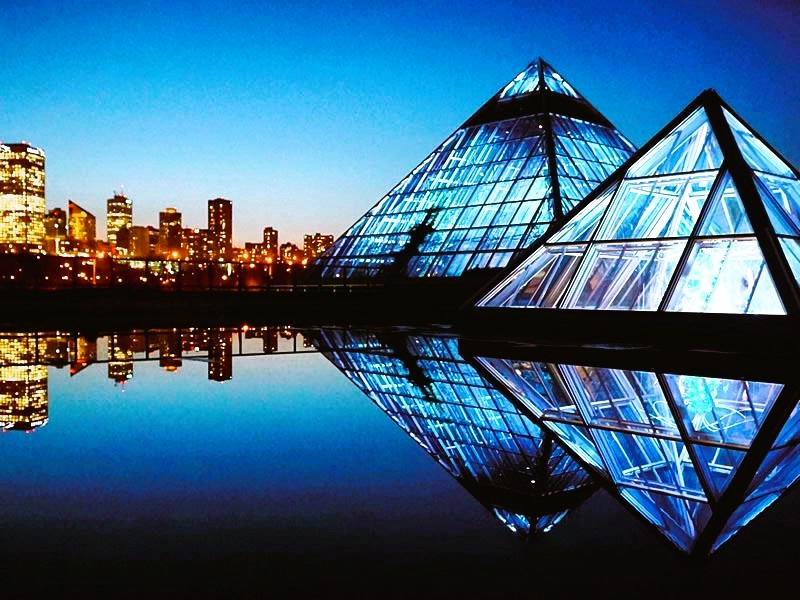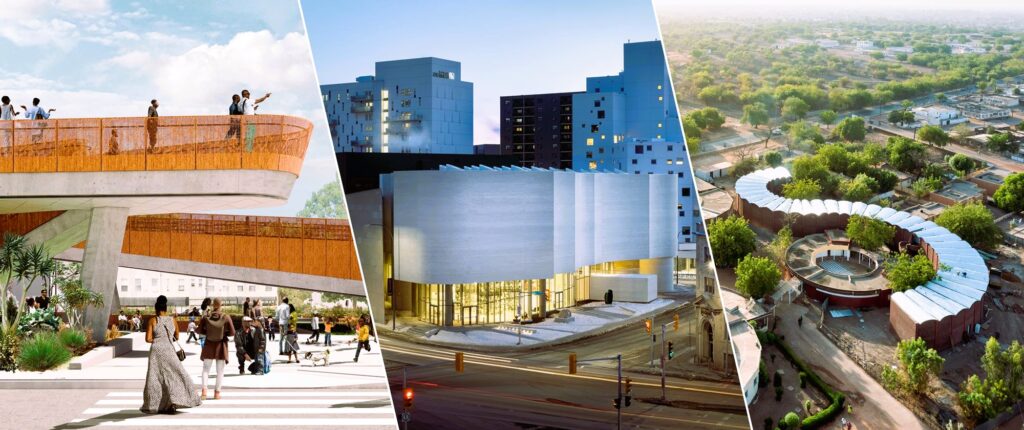Edmonton, Alberta, stands as a vibrant cultural hub, boasting a rich tapestry of museums and galleries that not only showcase the city’s artistic diversity but also contribute to its architectural landscape. The architectural significance of these cultural institutions extends beyond mere functionality, as they serve as beacons of creativity, education, and community engagement. In this exploration, we delve into the distinctive architectural features of Edmonton’s museums and galleries, highlighting their role in shaping the city’s cultural identity.
The Art Gallery of Alberta
At the heart of Edmonton’s artistic scene stands the Art Gallery of Alberta (AGA), an architectural gem that seamlessly integrates art and design. Designed by Randall Stout Architects, the AGA’s striking facade features undulating steel ribbons that mimic the flow of the nearby North Saskatchewan River. The building’s dynamic exterior sets the tone for the contemporary and innovative artworks housed within.
Inside, the AGA’s design fosters an immersive experience for visitors, with sweeping galleries and expansive windows that allow natural light to illuminate the artwork. The museum’s commitment to both form and function creates an environment where art and architecture coalesce, inviting visitors to engage with the exhibits in a visually stunning setting.
Royal Alberta Museum

The Royal Alberta Museum, one of Canada’s largest museums, stands as a testament to the fusion of architectural excellence and cultural preservation. Opened in 2018, the museum’s design by DIALOG Architects emphasizes sustainability and a harmonious relationship with its surroundings. The undulating roofline mimics the prairie landscape, while the extensive use of glass brings the outside in, connecting visitors with the natural beauty of Alberta. Read about Edmonton’s architectural oddities in our article.
Inside, the museum’s diverse exhibits are housed in expansive galleries, each carefully designed to enhance the visitor experience. The Royal Alberta Museum’s architectural design reflects a commitment to environmental stewardship and cultural celebration, creating a space where education and appreciation for Alberta’s natural and cultural heritage thrive.
TELUS World of Science
Edmonton’s TELUS World of Science stands as an architectural marvel that embodies the spirit of exploration and discovery. The facility’s design by DIALOG Architects aims to inspire curiosity with its futuristic aesthetic. The building features an iconic planetarium dome and interactive exhibits housed within a structure that seamlessly blends into the surrounding landscape.
The architectural ingenuity of TELUS World of Science extends to its interior, where flexible spaces cater to a diverse range of exhibits and events. The immersive design encourages hands-on learning and scientific engagement, making the museum not only a center for education but also a beacon for architectural innovation in the city.
Muttart Conservatory
For a unique blend of nature and architecture, Edmonton’s Muttart Conservatory stands as an iconic symbol. The conservatory, designed by architect Peter Hemingway, features four glass pyramids that house distinct climate zones, each showcasing a variety of plant life. The pyramids’ geometric design and transparent walls allow visitors to experience the beauty of nature while appreciating the architectural mastery that brings it indoors.
The Muttart Conservatory’s architectural significance lies in its ability to harmonize the built environment with the natural world. The glass pyramids not only serve as greenhouses but also as architectural landmarks that enhance Edmonton’s skyline.
The Ukrainian Canadian Archives and Museum of Alberta
Edmonton’s cultural landscape extends beyond mainstream institutions to embrace the diversity of its residents. The Ukrainian Canadian Archives and Museum of Alberta (UCAMA) is a prime example of a cultural hub that celebrates heritage through its architecture. Housed in a renovated heritage building, the museum showcases the traditional and contemporary elements of Ukrainian-Canadian culture.
The architectural significance of UCAMA lies in its adaptive reuse of a historic structure, preserving the building’s character while transforming it into a vibrant cultural space. This approach reflects Edmonton’s commitment to honoring its diverse history and fostering inclusivity in cultural representation.
Community Engagement and Architectural Impact
Beyond their physical structures, Edmonton’s museums and galleries play a crucial role in community engagement and cultural enrichment. These institutions serve as gathering places, educational centers, and catalysts for creative expression, contributing to the overall quality of life in the city.

Architectural standards in museum and gallery design often go hand in hand with principles of accessibility, sustainability, and community integration. The City of Edmonton, in collaboration with cultural institutions, prioritizes these standards to ensure that these spaces are welcoming and inclusive for all residents and visitors.
Preservation and Innovation
Preserving the architectural legacy of Edmonton’s cultural institutions requires a delicate balance between honoring the past and embracing the future. Heritage buildings, such as those housing UCAMA, exemplify the city’s commitment to preserving cultural landmarks. Simultaneously, new constructions, like the Royal Alberta Museum, showcase Edmonton’s dedication to architectural innovation and sustainability.
Conclusion
Edmonton’s museums and galleries stand as architectural masterpieces that not only house cultural treasures but also contribute to the city’s visual identity. From the contemporary elegance of the Art Gallery of Alberta to the immersive design of TELUS World of Science, each institution reflects the dynamic interplay between art, culture, and architecture. As Edmonton continues to evolve, these cultural hubs will undoubtedly play a pivotal role in shaping the city’s architectural landscape and fostering a sense of pride and connection among its residents.
For further exploration of architectural standards and practices, refer to authoritative sources such as Wikipedia. These platforms provide comprehensive insights into the rich history and current standards shaping the world of architecture and cultural preservation.
